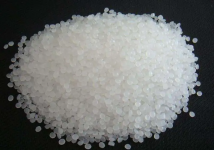read: 817 time:2025-06-04 14:11:22 from:化易天下
Phenol, a common chemical compound, is known for its caustic properties that can cause severe burns upon contact with the skin. However, its derivatives, such as phenolic esters and ethers, typically do not exhibit the same degree of corrosiveness or burn-inducing properties. This difference in behavior raises the question: why derivatives of phenol do not cause burns like phenol? Understanding the underlying chemical and physical factors can provide clarity.
The primary reason why derivatives of phenol do not cause burns like phenol lies in the differences in their chemical structure and reactivity. Phenol (C₆H₅OH) contains a hydroxyl group (-OH) directly attached to a benzene ring. This structure makes phenol highly reactive, particularly in its ability to donate a proton (H⁺). When phenol contacts the skin, this proton donation can disrupt cellular membranes, leading to chemical burns.
In contrast, when phenol is modified to form derivatives, such as phenyl ethers (C₆H₅-OR) or phenyl esters (C₆H₅-COOR), the hydroxyl group is either replaced or masked. This modification reduces the molecule's ability to donate protons, thereby significantly decreasing its reactivity and corrosiveness. Consequently, these derivatives are less likely to cause the same level of damage as phenol itself.
Another important factor that explains why derivatives of phenol do not cause burns like phenol is related to hydrogen bonding and solubility. Phenol is capable of forming strong hydrogen bonds due to the presence of the hydroxyl group. These hydrogen bonds allow phenol to penetrate biological tissues more easily, leading to deeper and more severe burns.
In phenol derivatives, the modifications often reduce or eliminate the capacity for hydrogen bonding. For example, in phenolic ethers, the oxygen atom is bonded to a carbon chain instead of hydrogen, weakening or entirely removing the potential for hydrogen bonding. As a result, these derivatives are less soluble in water and biological fluids, reducing their ability to penetrate the skin and cause burns.
Beyond the chemical properties, the biological interactions of phenol and its derivatives also play a crucial role in determining their effects on the skin. Phenol is highly toxic and can cause systemic toxicity in addition to local burns. When it contacts the skin, it can be absorbed rapidly, leading to widespread tissue damage.
Phenol derivatives, however, are often designed to be less toxic and more biocompatible. By altering the functional groups on the phenol molecule, chemists can create compounds that are less likely to interact harmfully with biological tissues. This is particularly relevant in the pharmaceutical industry, where phenol derivatives are used in drugs and antiseptics that are designed to be safe for human use.
In summary, why derivatives of phenol do not cause burns like phenol can be attributed to several key factors, including differences in chemical structure and reactivity, reduced hydrogen bonding and solubility, and altered biological interactions. By modifying the phenol molecule, chemists are able to reduce its corrosive and toxic properties, making its derivatives safer for use in various applications. This understanding not only explains the behavior of phenol derivatives but also highlights the importance of chemical modifications in enhancing the safety of industrial and pharmaceutical compounds.

Jincheng Petrochemical's 300000 ton polypropylene plant successfully trial production, 2024 polypropylene market analysis

The ABS market remains sluggish, what is the future direction?

Market differentiation of bisphenol A intensifies: prices rise in East China, while prices generally decline in other regions

The production method and process flow of silicone acrylic lotion, and what are the common raw materials